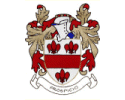Digital Data from an Archaeological Evaluation and Open Area Excavation at Former Rolls Royce Light Alloy Foundry, Derby, 2023
Archaeological Research Services Ltd, 2024. https://doi.org/10.5284/1118293. How to cite using this DOI
Data copyright © Archaeological Research Services Ltd unless otherwise stated
This work is licensed under a Creative Commons Attribution 4.0 International License.
Primary contact
Archaeological Research Services Ltd
Angel House
Portland Square
Bakewell
DE45 1HB
UK
Tel: 01629 814540
Resource identifiers
- ADS Collection: 5714
- DOI:https://doi.org/10.5284/1118293
- How to cite using this DOI
Introduction

This collection comprises images, CAD, spreadsheet, and site records from a programme of archaeological work consisting of evaluation trenching and open area excavations by Archaeological Research Services Ltd (ARS) at at the Former Rolls Royce Light Alloy Foundry, Derby, during January and February 2023.
The initial scheme of archaeological evaluation trenching was undertaken in January 2023, and the subsequent open area excavations which expanded on three of the trial trenches in January and February 2023. The purpose of the archaeological works was to record any archaeological remains that survived on the site in accordance with the Written Scheme of Investigation prepared for this work.
A Desk Based Assessment (DBA) was conducted of this site in 2022 in support of the planning application which revealed that this site had potential for demonstrating mid-19th century suburban development and growth alongside the iron foundry previously located on the site. Historic mapping shows that terraced housing, an inn, a pub and a chapel were located east of the iron foundry; such structures, if well preserved, would be of archaeological interest. As such, a condition was attached to the planning permission requiring submission of a Written Scheme of Investigation and the subsequent implementation of the archaeological works outlined.
The trial trenches had determined that much of the site was truncated and thus it was not necessary to further mitigate the inn, pub and chapel areas. However, a significant portion of the terraced housing remained and so Trenches 4, 9, and 12 were subject to further mitigation as Areas A, B, and C (respectively). Area A revealed a well-preserved 19th century midden privy but the northern part of area was significantly damaged by later 20th century development. Area B revealed two staircases associated with probable terraced houses and a 19th century sewer. Area C contained the footprint of five 19th century terraced houses.





